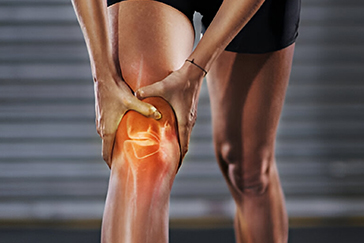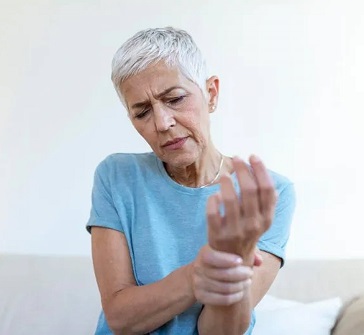 Book Appt.
Book Appt.
 Call Now
Call Now


Osteoarthritis (OA), often referred to as the "wear and tear" arthritis, is the most common form of arthritis worldwide. It is a degenerative joint disease that primarily affects the elderly, but it can also occur as a result of joint injuries or excessive stress on the joints. As a chronic and progressive condition, OA poses a significant burden on individuals and healthcare systems. Understanding the intricacies of osteoarthritis is essential to effectively manage and mitigate its impact on millions of people around the world.
The Basics of Osteoarthritis
Osteoarthritis is characterized by the gradual breakdown of cartilage, the tough and flexible tissue that cushions the ends of bones at the joints. This cartilage provides a smooth, gliding surface for joint movement. In OA, this cartilage deteriorates over time, leading to pain, stiffness, and a decreased range of motion. As the disease progresses, the underlying bone can undergo changes, such as the development of bone spurs, which further exacerbates discomfort and functional limitations.
While OA can affect any joint in the body, it most commonly affects the hips, knees, hands, and the spine. It is often asymmetric, meaning that it can manifest differently in each affected joint. For instance, OA in the knee may result in pain and swelling, whereas in the hand, it can cause the formation of bony nodules and stiffness.
The Causes and Risk Factors
The exact cause of osteoarthritis is not fully understood, but it is believed to result from a combination of genetic, environmental, and mechanical factors. Some of the key risk factors for developing OA include:
Symptoms and Diagnosis
The hallmark symptoms of osteoarthritis include pain, stiffness, and reduced joint function. Pain is usually worse after periods of inactivity, such as waking up in the morning or sitting for an extended period. As the joint movement progresses, pain can often subside. The stiffness in the affected joint can make it difficult to move it through its full range of motion.
A diagnosis of OA typically begins with a physical examination by a healthcare provider. Imaging studies, such as X-rays or magnetic resonance imaging (MRI), may be used to assess the joint's condition. These images can reveal the extent of cartilage loss, the presence of bone spurs, and other joint changes that are indicative of osteoarthritis.
Treatment and Management
There is no cure for osteoarthritis, but various treatments and management strategies can help alleviate symptoms and improve the quality of life for individuals living with the condition. These may include:
Living with Osteoarthritis
Osteoarthritis is a chronic condition that can impact an individual's daily life, including their ability to work, participate in recreational activities, and even carry out simple tasks. It often necessitates a comprehensive approach to treatment, involving a combination of medical, lifestyle, and rehabilitative interventions.
One of the essential aspects of managing OA is maintaining a proactive dialogue with healthcare providers. Regular check-ups and open communication about symptoms and treatment options are crucial for effectively managing the condition. Additionally, incorporating self-care strategies, like exercise and a balanced diet, can contribute to the overall well-being of those living with OA.
In conclusion, osteoarthritis is a widespread condition that affects millions of people globally. While there is no cure, individuals with OA can lead fulfilling lives with the right combination of medical and lifestyle interventions. Understanding the causes, symptoms, and treatment options for osteoarthritis is crucial in improving the quality of life for those who bear its burden and in reducing its societal impact.
SHALBY Sanar International Hospitals provides extensive medical procedures backed up with our state-of-the-art technology and a team of highly qualified & experienced clinical experts.



Life Transformed: Mr. Blojah Felix Journey to Pain-Free Living | SHALBY Sanar

Pain-Free Living After 6 Years: Knee Replacement Success Story | Dr. Rohit Lamba

Bilateral Total Knee Replacement by Dr. Vikram Shah | SHALBY Sanar International Hospitals

Remarkable Recovery Story: Hip Replacement for Non-union Fracture

Incredible Recovery Story: Bilateral Knee Replacement Transformation

Knee Replacement Surgery by Dr. Rohit Lamba: 60-Year-Old's Remarkable Recovery

Renewed Hope: Successful Hip Replacement Surgery Transforms Iraqi Patient's Life

Exploring a Case of Revision Knee Replacement: Insights from Dr. Rohit Lamba

Triumphant Journey: Ms. Fatima, 69, Triumphs Over Revision Knee Replacement Surgery

Leaving the crutches behind – Riyaz, 43, gains confidence after a successful Hip Replacement Surgery

Transformative Total Knee Replacement Surgery: A New Lease on Life for 48-Year-Old Ramesh

Miraculous Recovery: 17-Year-Old Kenyan Overcomes Osteosarcoma with Mega Prosthesis Surgery

Mr. Omar Faruk's Remarkable Knee Recovery: ACL Reconstruction Success Story

Mrs. Vijay Luxmi's Remarkable Knee Replacement Journey

Umidjon, 36, from Uzbekistan shares his gratitude for a successful total hip replacement surgery

Ms. Mohsin from Iraq shares her gratitude for a successful Computer Navigated Total Knee Replacement

A Total Hip Replacement surgery gives Ms. Barry from Ghana, the ability to walk again.

Dr. Rohit Lamba talks about a successful Hip Replacement Surgery carried out on an Iraqi patient
Our doctors pen down their research findings and experiences from time to time. Their words provide deep insight into the latest techniques, technologies and other advancements in healthcare. It provides expert answers to all kinds of health questions for real-life issues.
VIEW ALL.png)
.png)



Since the day of its foundation, SHALBY Sanar International Hospitals is committed to provide comprehensive healthcare services. It regularly organizes awareness programs in its premises and encourages outdoor healthcare activities and camps with an intent to put focus on preventive healthcare.
VIEW ALL